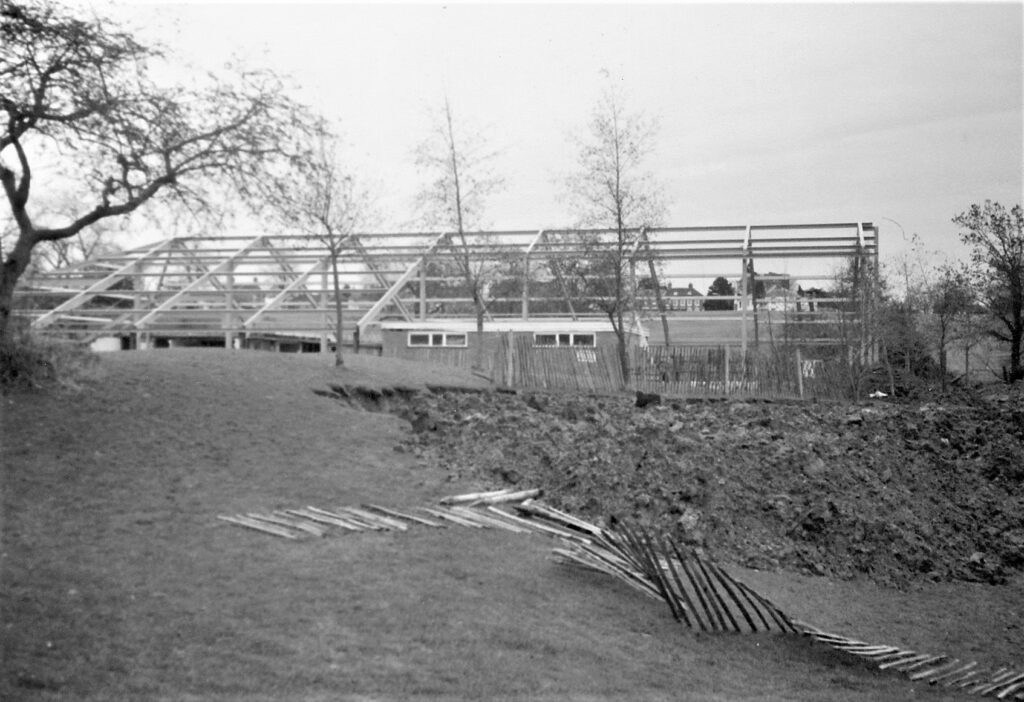


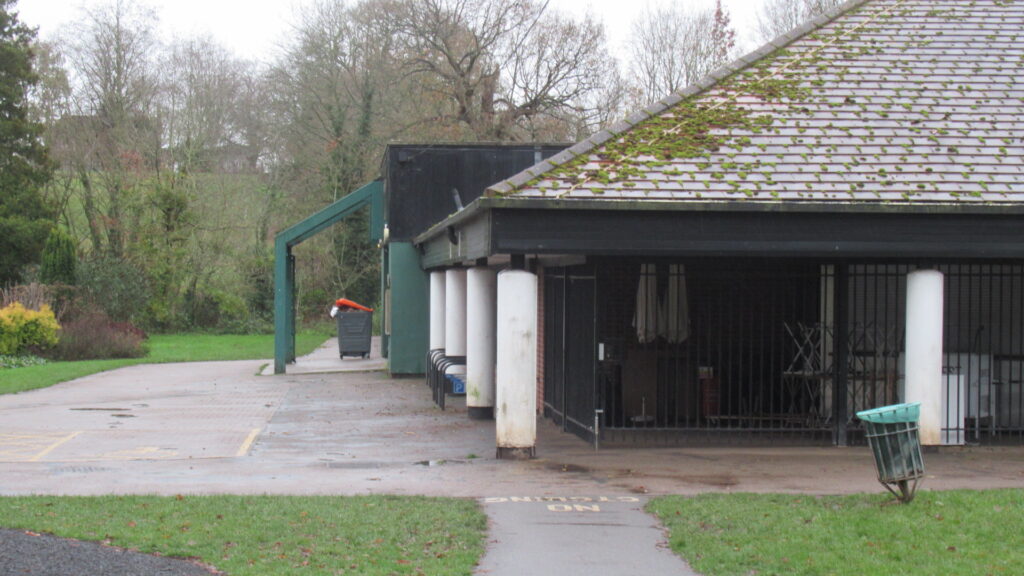
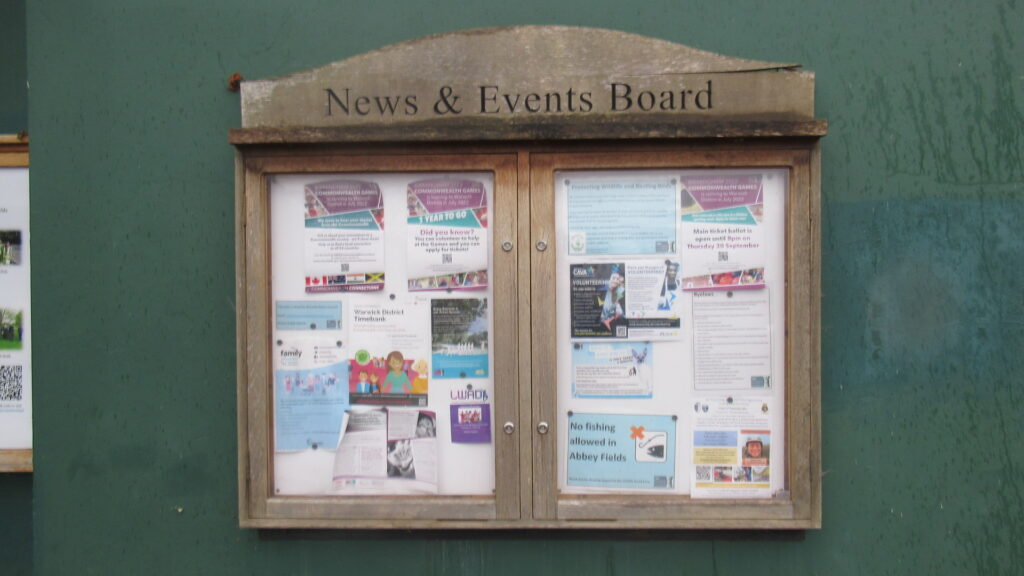
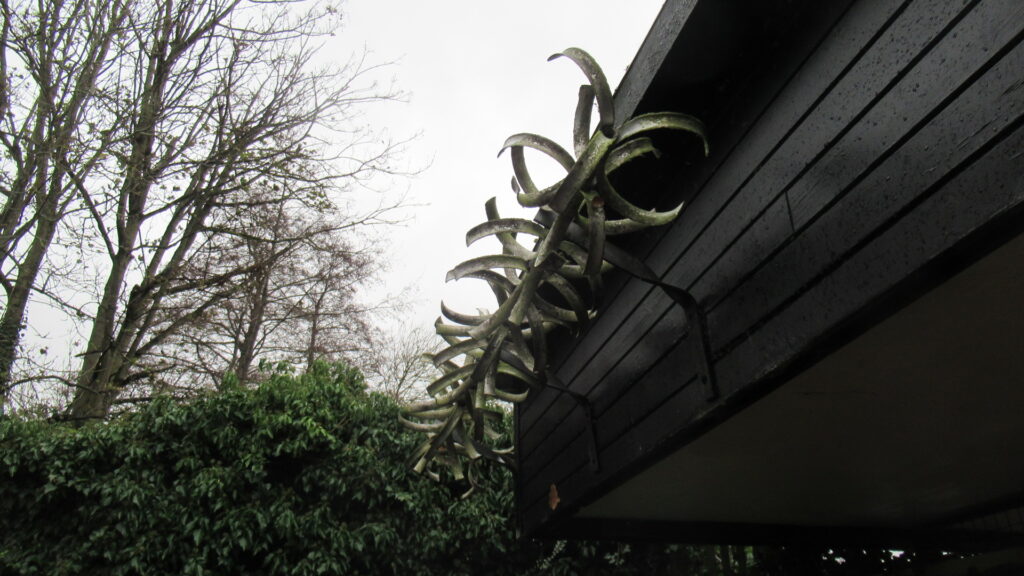

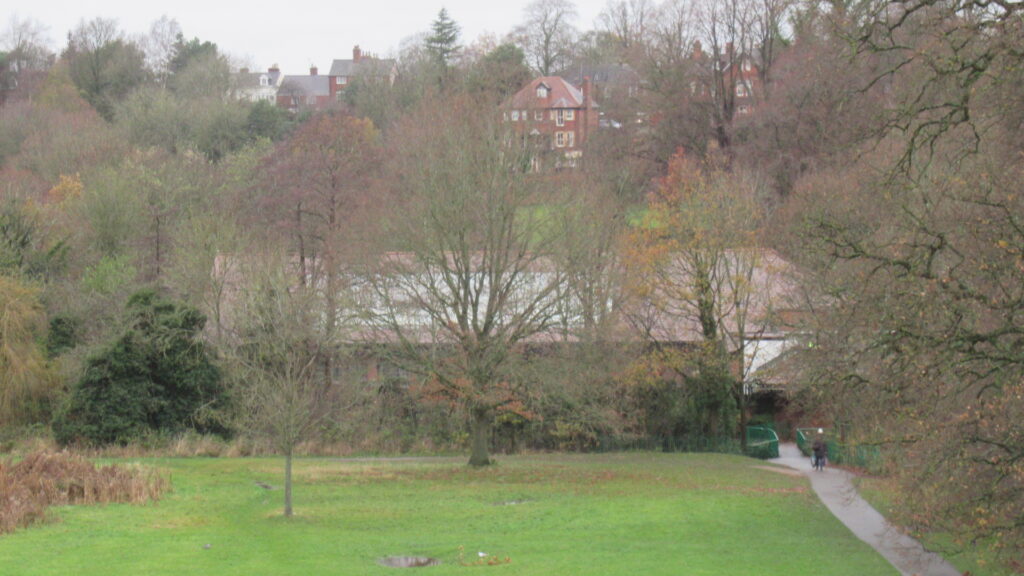



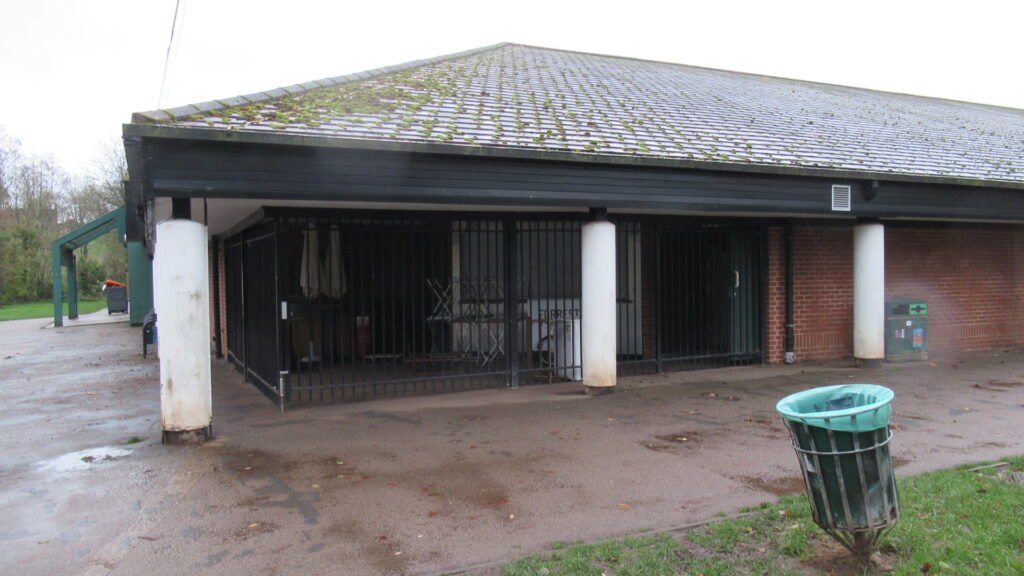

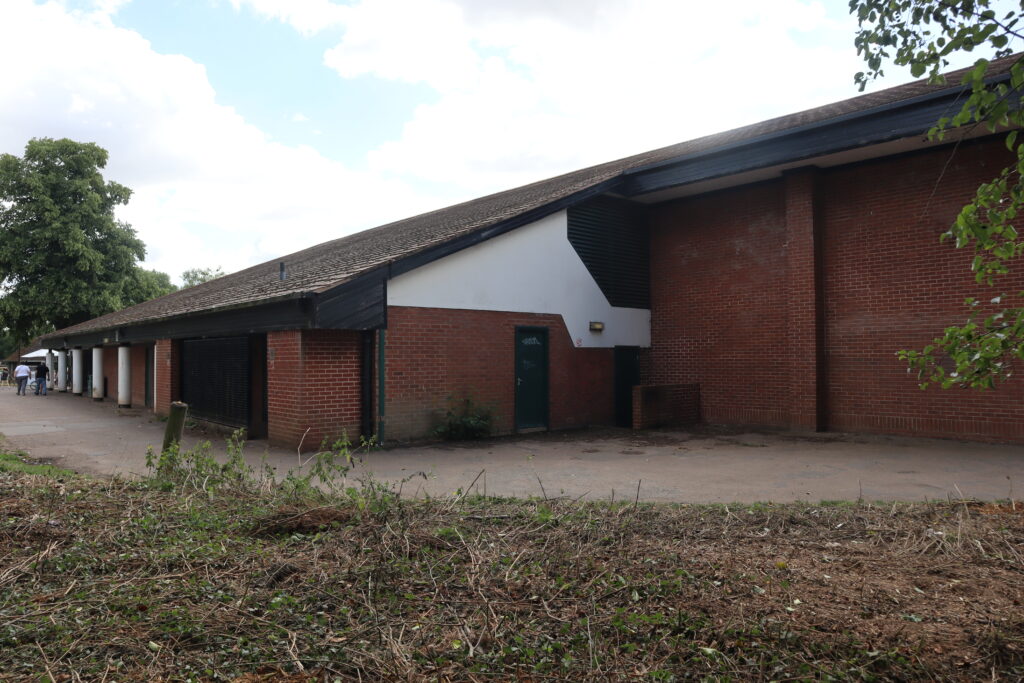
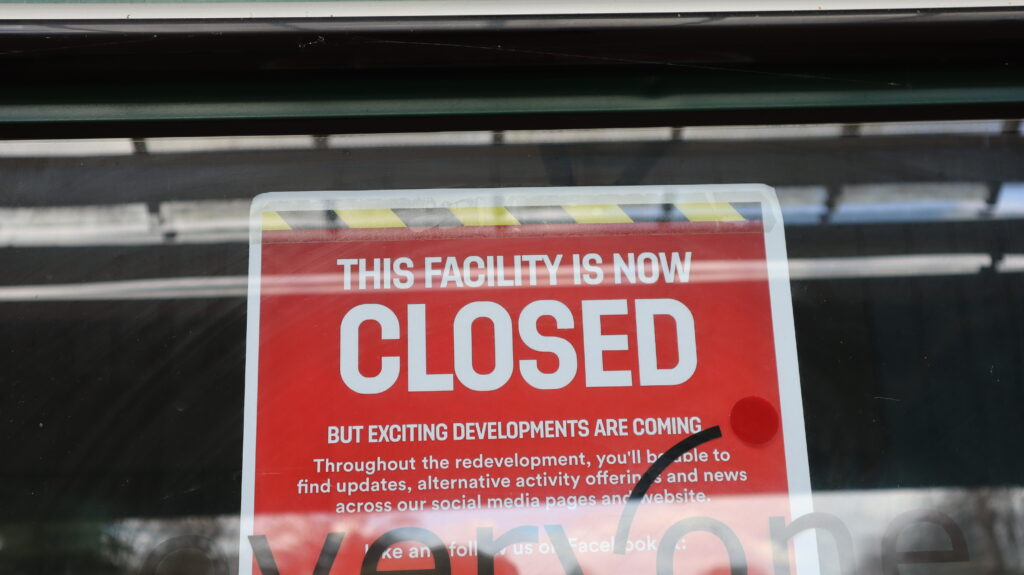















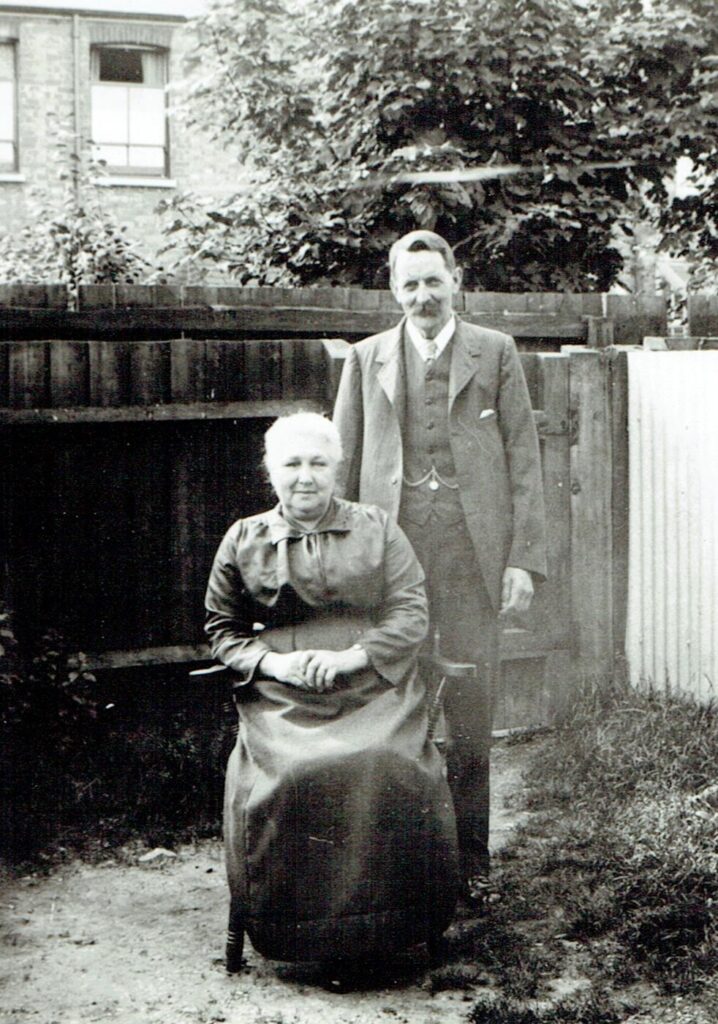
Harold Francis Newey was born on the 22nd October 1897, to parents William Newey and Emily Wyton. (pictured, left). Emily originated from Hook Norton.
The family lived at 50, High Street (Newey cottage) where the Newey family had lived for generations.


His father was a postman in Kenilworth, and after leaving school, Harold also got a job with the Post Office, becoming a ‘Telegraph messenger boy’. So they both spent a lot of time on their bikes, around the streets of Kenilworth!
But within a few years, WW1 had started and by the time he was 18 years-old he had signed-up, and was transferred into the reserve of the R.G.A (Royal Garrison Artillery). After his training he was eventually called-up for service in August 1917. But he never left the country.
The R.G.A. provided heavy siege howitzers, and coastal artillery plus mobile guns on railways. Some of these guns were manufactured at the Coventry Ordinance Works.
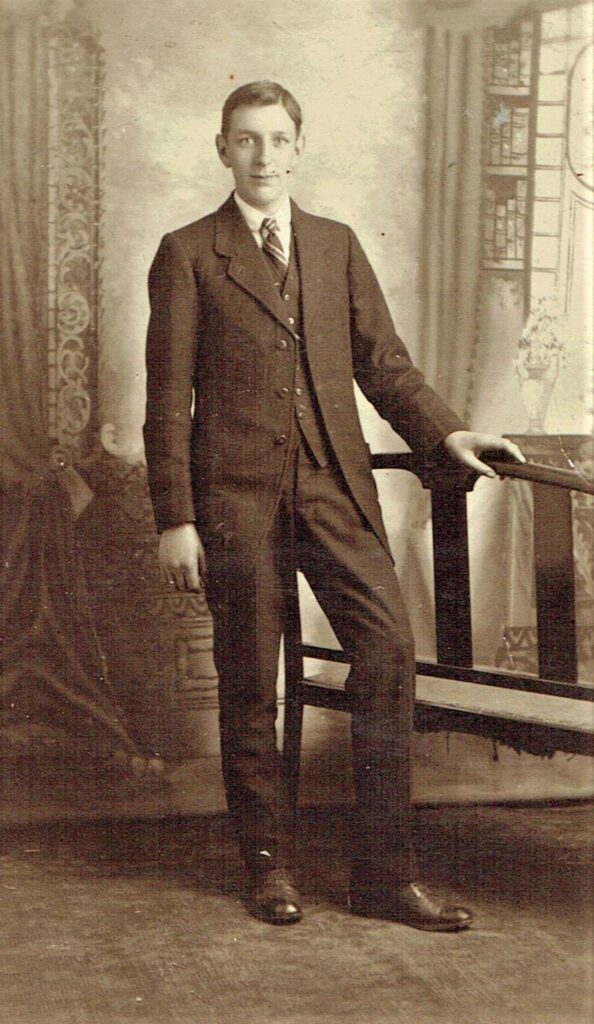
Having got through the war, he was discharged and put into the Army Reserve in November 1919. So, it was back to civilian life in Kenilworth for young Harold.
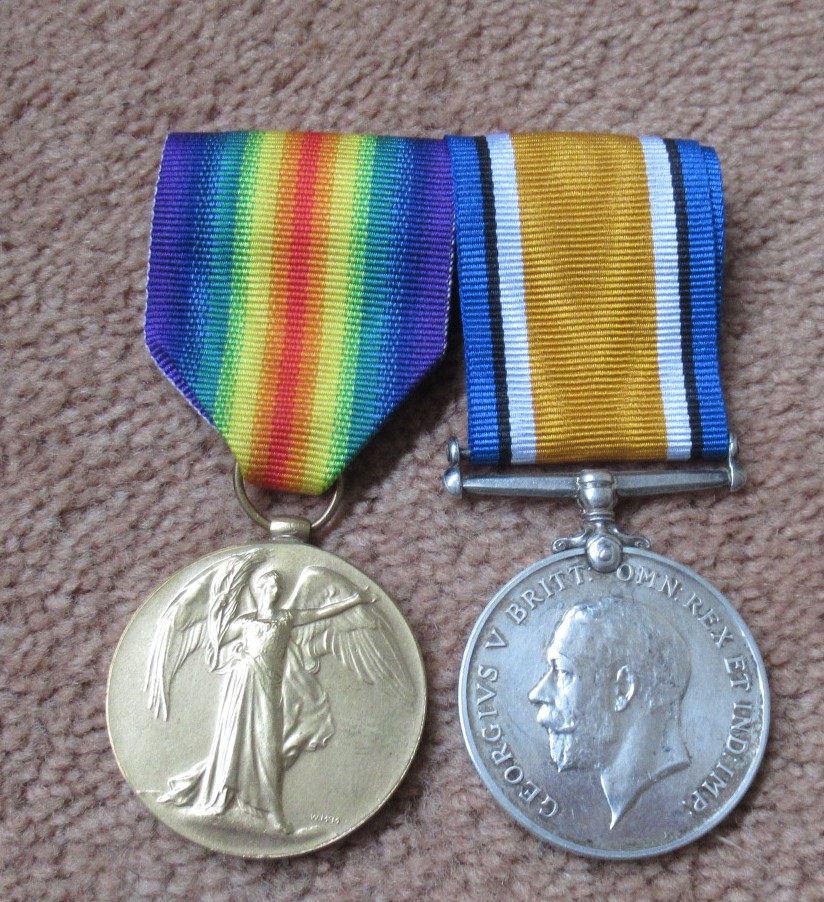
Following in his father’s foot-steps, he became involved with St Nicholas church, and eventually became a sexton, and was a keen bell-ringer.
In 1929, he married Rose Hughes of Warwick Road at St Nicholas. They settled into married life at 19, St John’s Street, and had one daughter together, called Rosemary. For the best part of his adult life, Harold worked in the engineering industry in Coventry, he last worked for the Auto. Machinery Co. in Aldermoor Lane.
On the outbreak of WW2, Harold voluntered to become an ARP Warden in Kenilworth and was one of the first responders on the scene when the landmine fell on The Square/Abbey End in November 1940, which killed 25 people. He witnessed much horror and destruction that night, which he probably never forgot. Indeed, Kenilworth has never forgotten.
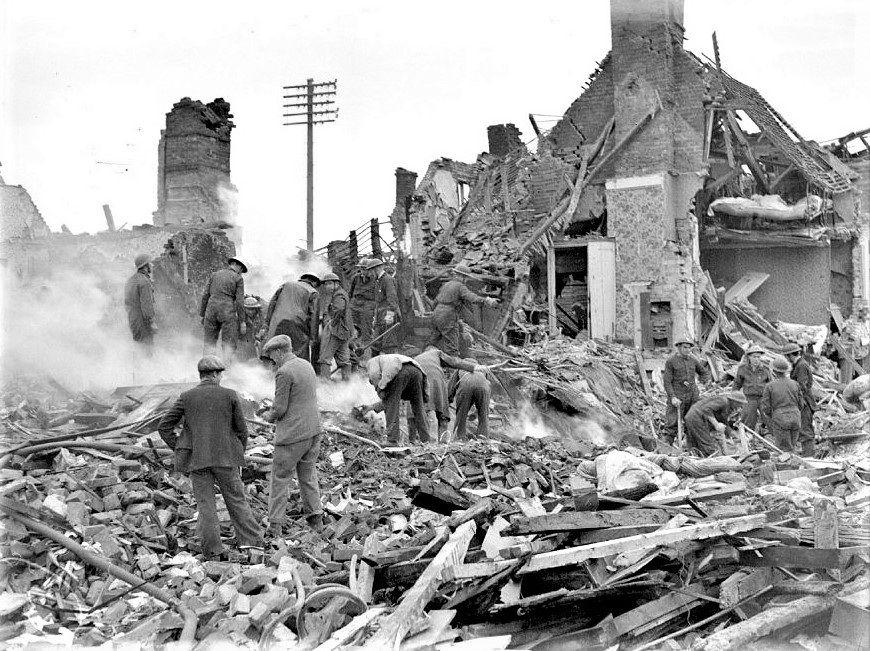
In 2023 his ARP helmet was donated to the Abbey Museum by his grandson Barry Rose. The museum is run by The Kenilworth History & Archaeology Society. https://www.khas.co.uk/
‘Triumph Over Adversity‘
In August 2022, after several weeks of very little rain and record high temperaures, the water level in the Abbey Fields Lake was critical, and the carp were dying due to lack of oxygen. Disappointingly, the Environment Agency, Severn Trent and Warwick District Council weren’t helpful following a site visit on the Thursday 11th, saying “Nothing Could Be Done“.

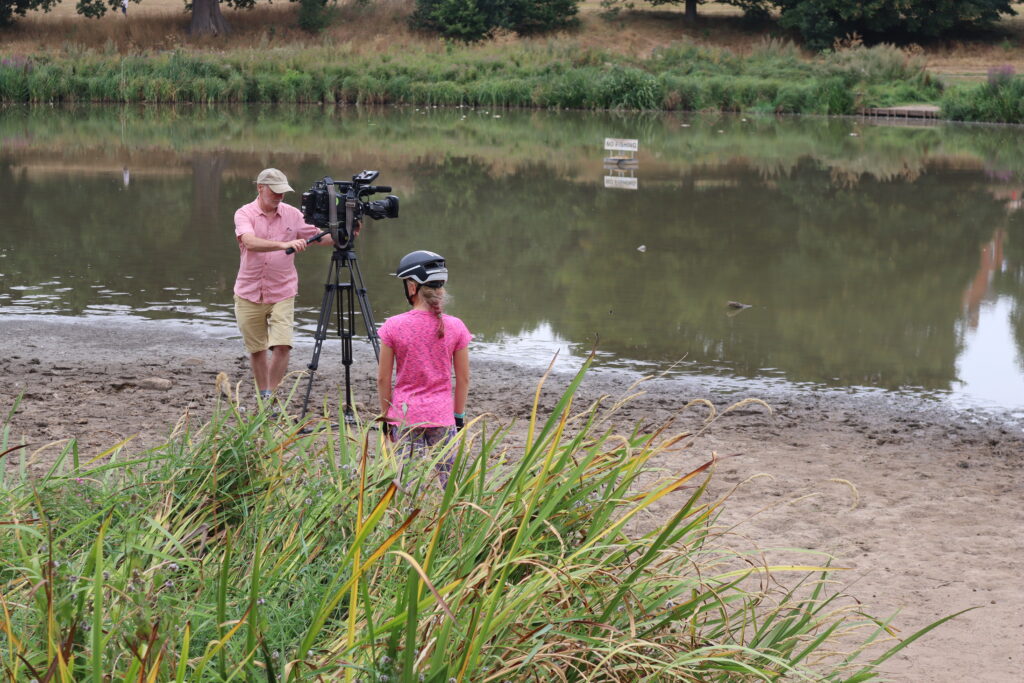
So it looked like the fish would perish, but the Kenilworth Community had other ideas. A group of volunteers, lead by Callum Thorpe, Darren Rees, Mark Copsey and Cliff Owens, later known as the ‘Lake Lads’, got together and hatched a plan to rescue the fish. They set up camp (around the clock) for several days on the footpath just along from the swimming pool. Donations of water pumps, fountains, generators, fuel, food and drink came flooding in.

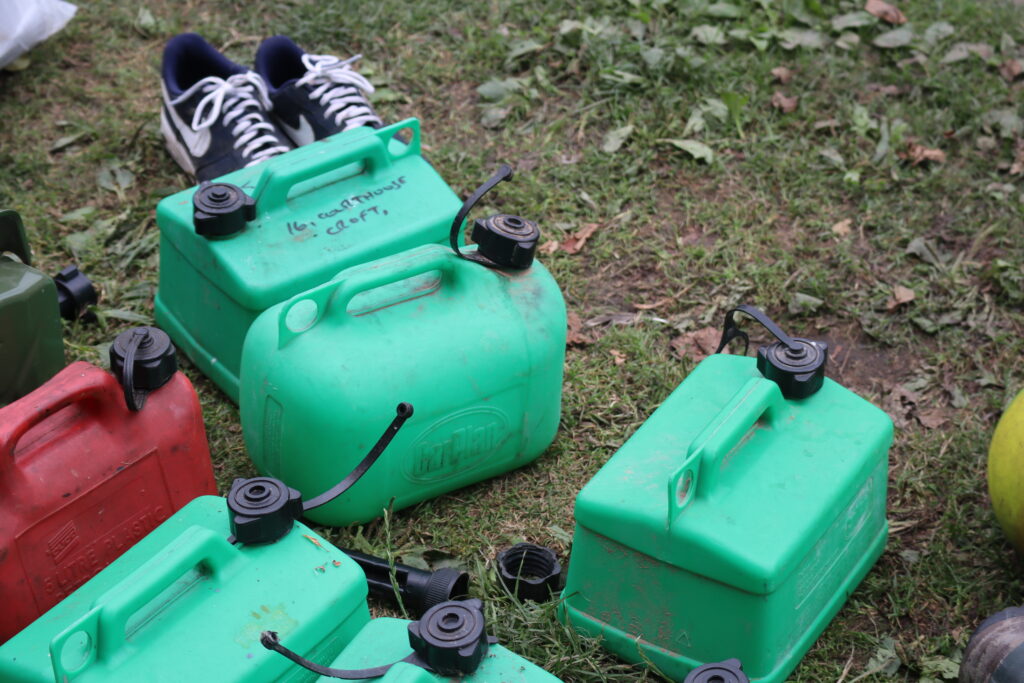
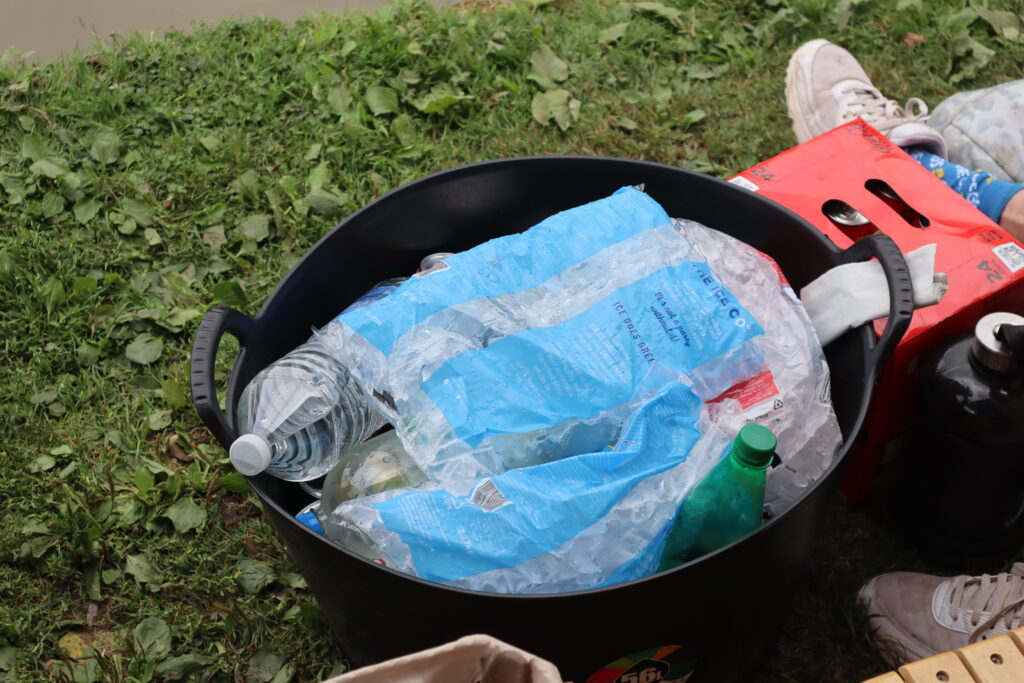
A fund was immediately set up by Kenilworth Pet & Garden Supplies, with a donation from them of £500. A total of around £2000 was raised initially to purchase a tanker of fresh water. A supplier was found and a tanker of 19,000 litres arrived on 14th August, and the fish responded immediately. However, it became apparent that purchasing further tankers would be too costly.
BBC Midlands Today became aware of the story (as did BBC CWR Radio) who sent a camera crew down to the lake to record the events that were unfolding. Their report appeared on the evening of Monday 15th, which gave the story much needed publicity, and would have widened the cause of the ‘Lake Lads’. Several interviews took place, including one with WDC councillor Richard Hales, who became pivotal in the support of the eventual removal of the carp. Up to this point, approximately 300 had already died.
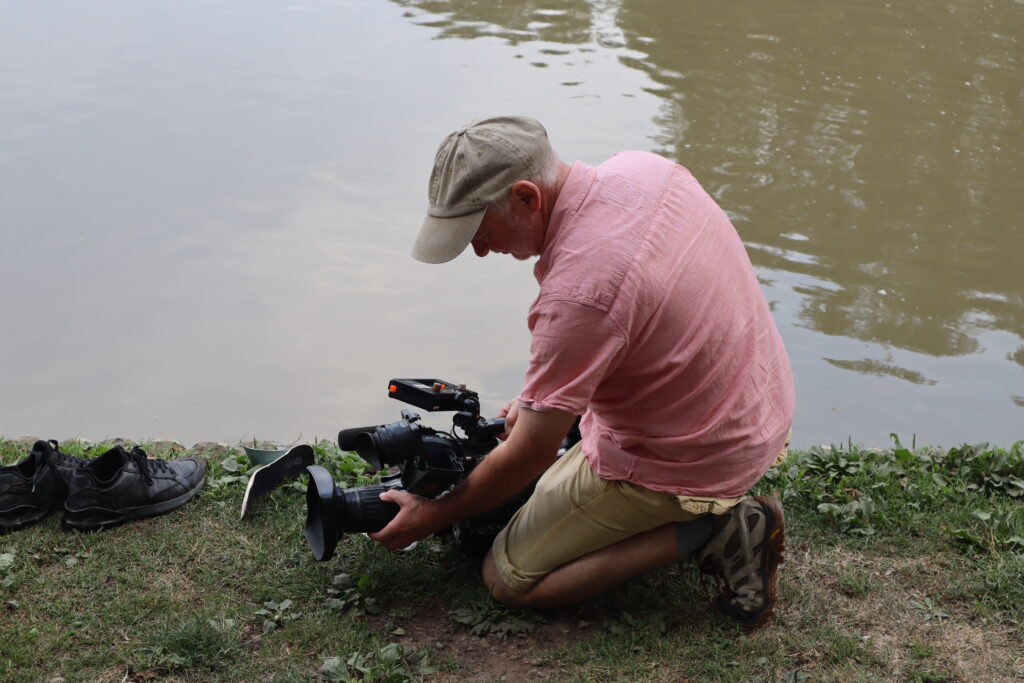

To save the carp from certain death the only option available was for them to be removed. Lavender Hall Fishery were granted a licence to remove the fish by the Environment Agency, and netting started on the evening of the 15th, and continued the following day. They eventually removed approximately 650 fish, and these were transferred into one of their own lakes’s at Berkswell. The carp were of a good size, ranging from 3-5lbs. It is believed that less than 5% of the original stock, now remain. So, in the end, it was a ‘Triumph Over Adversity’.
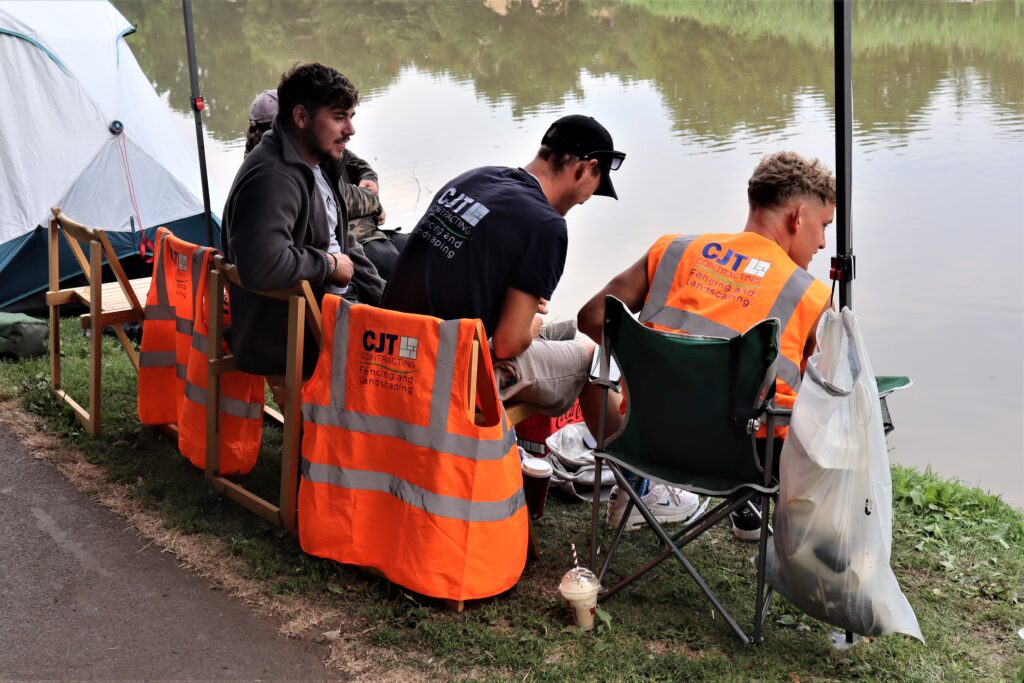
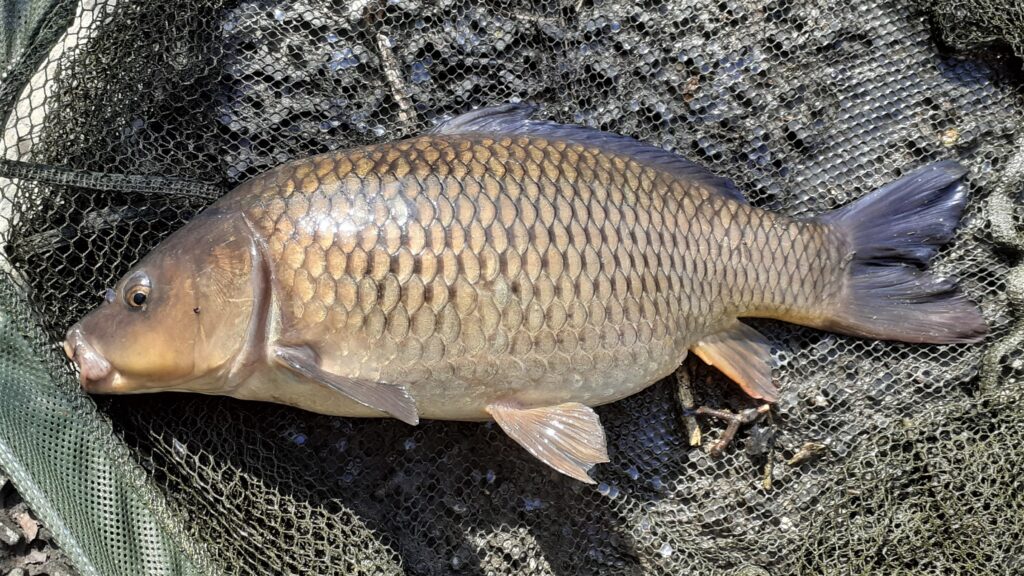
It is rumoured that the carp were illegally introduced into the lake in the early 2000’s as small fish, and have since thrived due to the natural food available to them (daphnia etc) plus the supplement of bread and other treats from the general public. In recent years, due to their growth and over population, in conjuction with Leamington Angling Association, the lake has been regulary netted by Jon Wall Fisheries of Newark. Many of the carp have now been stocked into LAA’s own fishing lakes. In the spring of 2023 the lake was netted again, and a small number of fish were removed.
On Thursday 16th September 1909, Charles Hobbins of Crackley Cottages, left for work as usual at 6am to start his shift at the oil-cake mill at Mill End. He returned home 12 hours later to find his wife Elizabeth and baby daughter, Kathleen Maria, were missing. His other children, three boys, who were playing outside, didn’t know of their whereabouts.
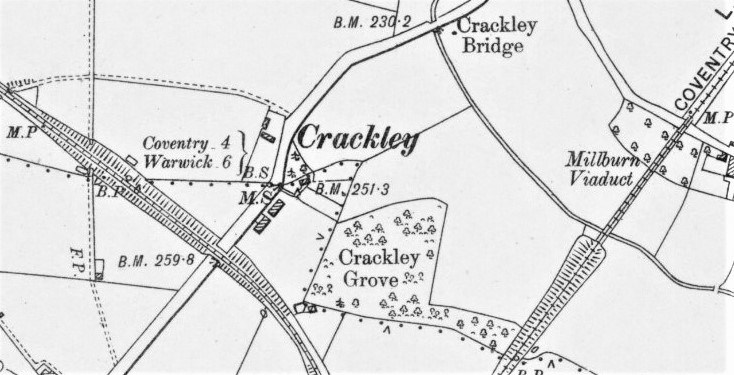
The house was shut up and It appeared they hadn’t been seen since lunchtime, and the key was in its usual place. He came to the conclusion that his wife had taken the baby to visit friends in Coventry. But when she did not come home by the late carrier, he became very concerned, and his anxiety naturally increased as the night wore-on. Where could they be?
Early next morning, with the help of neighbour Arthur Hunt, they went to search for them. They eventually found their bodies submerged in a gravel pit at Knowle Hill Farm, the baby was found underneath her mother. Mrs Hobbins was 41-years-old, Kathleen was just 11 months.
The police were immediately informed, and under the supervision of Inspector William Parkinson the bodies were recovered and taken to the police mortuary to await an inquest.
One possible route that Mrs Hobbins could have taken that day was to walk up Crackley Hill, left into Common Lane, at the bottom a right-turn into Dalehouse Lane, then left up Knowle Hill. She would then have taken a left turn towards the gravel pit. But no one for certain knows which route she took.
The inquest took place on 18th September at the Council House in Upper Rosemary Hill, presiding was Mr J. J. Willington-Wilmshurst, Coroner for Mid-Warwickshire.
Mr. Hobbins, 38, who was sobbing pitifully, said he had been married to Elizabeth since 1896. He told the court she had been troubled with her nerves for years, and also complained about head pains. The coroner enquired if she had anything worrying her, he replied, saying that she seemed to think she was dirty and neglecting the children, and was not cleaning the house. But everything was fine as far as he was concerned. The coroner further enquired if his wife ever said anything about taking her own life? Mr. Hobbins stated that she sometimes said she wished she was dead, but he didn’t take her seriously. His wife was fond of children and they lived happily together.
Mrs Neale, neighbour of deceased, told the inquest that she last saw her at about 1.30 that day, she seemed a little strange, and was complaining about pains in her head. She saw Mrs Hobbins and the baby walk in the direction of the Common. Mrs Neale said that the deceased kept the house very clean and must have been a delusion if she thought she neglected the house.
Arthur Hunt, also of Crackley Cottages, spoke to the court regarding accompanying Mr. Hobbins on the search for his wife and child. He said it was in the direction of the pit that the deceased and her husband used to take walks, which was about half-a-mile away. Upon visiting this piece of water, they saw a woman’s hat floating on the surface and directly underneath they could see the outline of a body, which proved to be that of Mrs Hobbins and her baby. The water was shallow, and a steep bank down to it. He did not think it was possible for anyone to fall into the water and get to where they found the bodies, for if anyone rolled down the bank accidentally, he or she would stop in very shallow water. There was a considerable amount of mud in the pit, but it might be possible for someone to fall in during darkness.

Inspector Parkinson said that the bodies were three or four feet from the edge of the water, and Mrs Hobbins was lying on her face. The child was clasped tightly to her breast, and both were fully dressed. No letter or note was found, and the bodies were in 2′ 6″ of water. There was no evidence of slipping on the banks of the pit. During his enquires, he could not find any person who had seen Mrs Hobbins since Mrs Neale had spoken to her early in the afternoon.
Dr. Wilmott spoke about the post-mortem examinations on the bodies. He said the only injuries he could find were three small bruises on Mrs Hobbins legs. In his opinion, both died due to drowning.
In summing up to the jury, the coroner said, that if they thought that the woman committed suicide, then they must also bring a verdict against her of ‘Wilful Murder’ in respect of the child. On the other hand, the evidence shows that she might have tumbled into the pit, with the child, whilst wandering in the dark, in a ‘frenzied’ state, owing to her suffering.
The Jury returned a verdict in both cases of ‘Found Drowned‘.
Charles Hobbins and his three sons eventually moved away from Crackley Cottages, and found a house in Henry Street – But more tragedy was to follow. By 1929, Charles had re-married, but in October of that year, he committed suicide by cutting his throat.
At an inquest held at Kenilworth Police Station on 22nd October, witness, Mrs Elizabeth Falconbridge, sister of the deceased, said her brother had also suffered a nervous breakdown over the last 20 weeks. He complained about pains in his head, he was also upset that he could not get his job back with the Kenilworth Urban District Council. His second wife was presently very ill, and unable to attend the inquest. (she lived until 1952)
A lodger at the house, said he was cleaning his motor-cycle when Hobbins came running out of the house with blood streaming from his throat. The witness went to fetch Dr. Day, but on their return, they found Hobbins lying dead in the scullery. He was 58.
The jury returned a verdict of ‘Suicide while of unsound mind’.
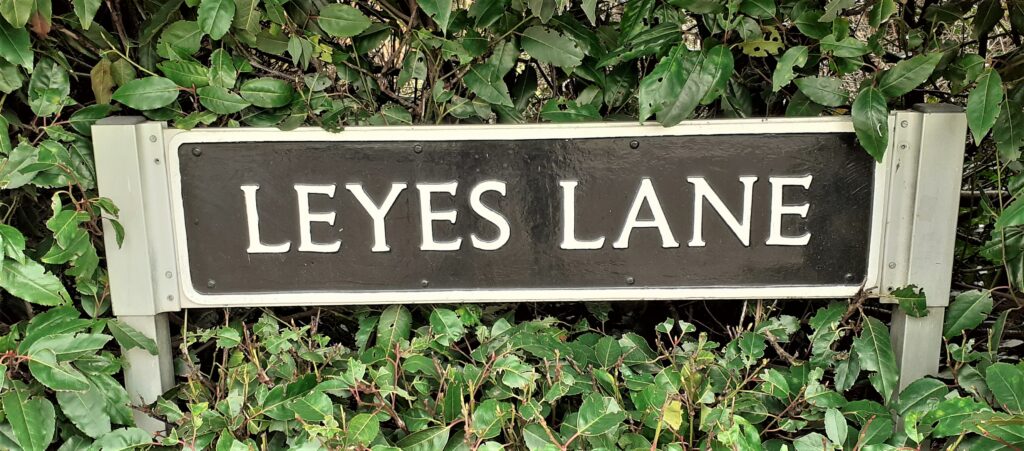
On the evening of Thursday 29th October 1891, John Reuben Rainbow, turned up ‘out of the blue’ at his cousin’s house at Clayfield (now the Whitemoor area) and offered to take him for a glass of beer. His cousin, 29 year-old George Alfred Brewer duly accepted his offer. But he felt it was rather strange that he had come over on such a cold winter’s night, just for a drink, especially as they hadn’t seen each other for months. They decided to go out for about an hour.
Rainbow, a farmer, originally born in Kenilworth had travelled all the way from his farm at Wappenbury on a pony and trap. But within minutes of their departure, a groaning was heard outside the front door of the Brewer’s house and when his father opened the door, his son fell into his arms. He had been shot by Reuben (as he was known) and he had rode off towards home. His father immediately went to get Dr. Clarke and the police. The shooting occured at the end of Leyes Lane at the junction near to the ‘Elmdene’ estate. (the junction of Windy Arbour/Park Hill).
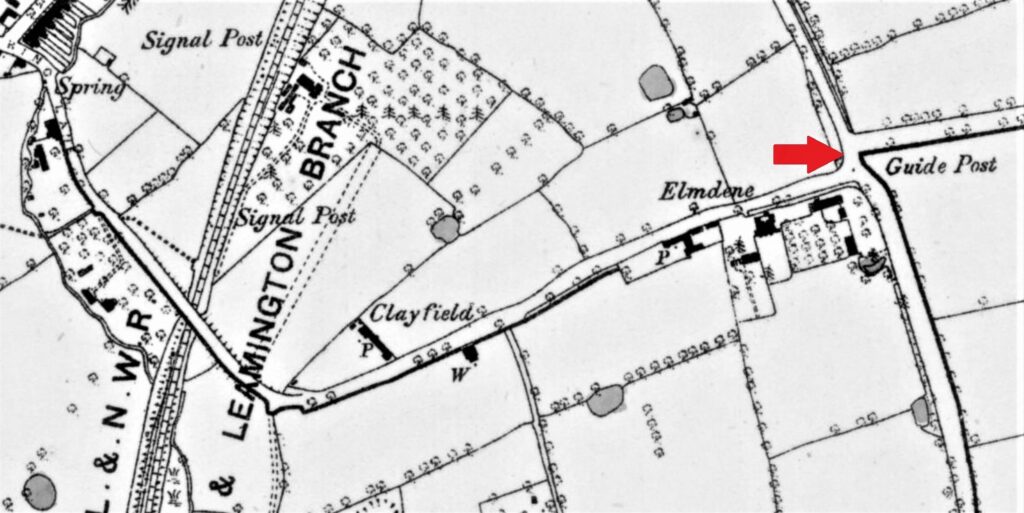
Reuben was reported to have had his hand in his pocket feeling for something. He produced a revolver and placed it against George’s side and pulled the trigger. Reuben only fired the one shot, probably thinking one was enough to kill him. But somehow, George managed to jump off the trap and make his way home.
After receiving the report of the shooting, the police were quickly in pursuit of the suspect. At Stoneleigh the officer heard that a trap had been seen driving through the village at speed. On arrival at Weston-under-Wetherley he came across an empty trap at the side of the road. Soon after, while entering Wappenbury another police officer arrived and they were approached by the suspects brother, William Rainbow. He told them that Reuben had shot himself.
Meanwhile back at Kenilworth, despite removing the bullet, Dr Clarke could not save Brewer. He died the following afternoon (30th October) and was still conscious right up until a few minutes before his death. He was a Catholic, and after hearing of the tragedy the Right Rev. Monseigneur Souter attended him, and was present at the time of his death.
The inquest took place on Saturday 31st October at the Bull Inn, Weston-under-Wetherley over the death of Mr Rainbow. Presiding, was Coroner of Mid-Warwickshire, Dr Wynter. The foreman of the jury was Mr William Coles.
First witness was Joesph Rainbow, father of the deceased. He told the court that his son was 35 year-old and had been strange over the last week or two, but he did not take much notice about it. Deceased did not seem to trouble about anything or how things went. Sometimes he would work and others times he wouldn’t. Infact, he would seem quite reckless at times. On Wednesday he drove to Rugby, put up the trap there and went on the train to attend Newmarket races. He returned late in the evening and got into the house by means of a latch-key.
Next morning (30th October), witness tried to induce him to get up and assist on the farm as he was short of labourers but he refused to do so and remained in bed until mid-day. When he finally came down the deceased got out a number of bills and letters. He told his mother that ‘He had done with it’. He handed some bills and a milk contract to his sister and said; ‘It is the last time’. He remained in the house for sometime and put a ticket on a churn in which milk was to be sent to London. Witness saw him several times but did not notice anything perculiar in his manner. Deceased drove away from the house at about six o’clock and earlier had told one of the men on the farm he was going to Kenilworth. He also told his mother, who tried to pursuade him from doing so, but he said he needed to go and see his cousin. Deceased was not on friendly terms with his cousin, infact they had a quarrel three or four months ago and witness heard they had fought. He did not know what the quarrel was about but Brewer had said something disrespectful about the deceased. Witness had heard that his son had threatened ‘to do’ for Brewer.
Deceased returned home at about 9 o’clock and came into the sitting room and removed his boots. Then, without saying a word he went upstairs to his bedroom as if he intended to retire for the night. Soon after, a farm worker came to the door and said that the pony and trap was missing. Mrs Rainbow went to the foot of the stairs and called to deceased but suddenly a gunshot was heard, followed by a fall. They rushed upstairs and found the bedroom door locked. They burst it open and discovered deceased lying on the floor bleeding from the head. He moved twice, then died. The coronor asked witness, if he knew of any reason why he should have said he would ‘do for’ Brewer?, witness replied, no I dont. But Brewer had put a bit of scandal about disrespecting him but I do not know of anything else. In reply to the jurors, he said that his son was always reserved but he hadn’t noticed anything strange about him until the last few days.
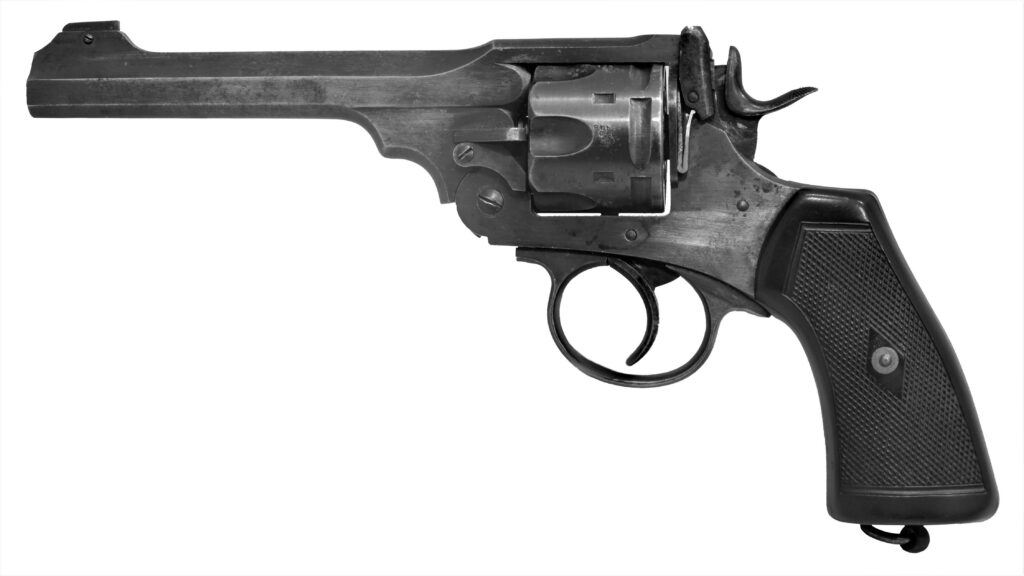
The next witness was William Rainbow, of Frankton, brother of deceased. He said he was at his father’s house on Thursday evening but his brother had already left for Kenilworth but was there when he returned at about nine o’clock. He corroborated the evidence given by his father. He added that he had never seen the revolver and never even knew he had such a weapon. After finding the deceased he went looking for the police and soon found two officers who said they had come across a pony and trap a few minutes earlier.
In reply to a question from the foreman, witness said Reuben had gone about his work but seemed rather strange. A juror asked: Did you know what he went to Brewer’s for? Witness replied; No, that is where the mystery is.
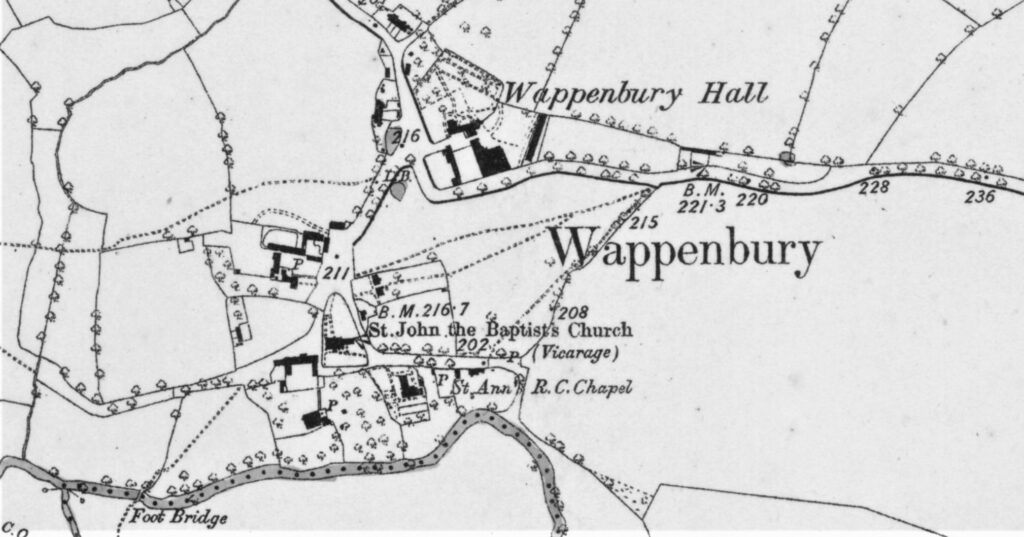
Witness, Sergeant Allcott of Kenilworth Police stated that on receiving information from Brewer that Rainbow had shot him, he started off in a cab in pursuit of the deceased. At Stoneleigh he heard that a man had driven through the village at a rapid-rate about half-a-hour before. About a quarter of a mile from Weston he found an ownerless pony and trap tethered up to a gate which he thought was probably Rainbow’s. A search of the the ditches and adjoining fields could not locate Rainbow. On arriving at Wappenbury witness procured the assistance of P. C. Greaves. When they got within 200 yards of the deceased house, they came across William Rainbow, deceased’s brother, who was on his way to alert the police, he told them his brother had shot himself. When witness went into the bedroom he saw Rainbow lying on the floor dead and bleeding profusely from a bullet wound near the right temple. In the pockets of an overcoat on the bed he found a total of 22 bullets. The revolver was a new one and the bullet extracted from Brewer corresponded to those found in the overcoat.
With the overwelming evidence of the case, the jury could only come to one conclusion. They returned a verdict that Rainbow committed suicide while ‘temporarily insane’.

The Inquest of George Brewer took place on Monday 2nd November at the Abbey Hotel in Kenilworth. Presiding was Coroner Dr. Wynter. The jury viewed the body prior to the inquest which lay at the Brewer’s house at Clayfield. The foreman of the jury was Mr. Henry Street.
First witness was John Brewer, widower and father of deceased. He confirmed his son was 29-years-old, and resided with him. Last Thursday I was at home with him in the evening when at about 7.30, my nephew Rainbow from Wappenbury, came in. He shook hands with both of us and we talked in a friendly way. He seemed sober. After we talked for about 20 minutes or so, he requested George go out for a hour to have a drink. My other two son’s, John and Thomas are licensee’s, and Rainbow said he didn’t care where they went for a drink. George then went out with Rainbow who shook my hand and wished me, goodbye. My son said he should not be long and asked me to sit-up for him.
Minutes later I heard someone groaning outside and when I opened the door, my son fell into my arms. He said, Dad, I am shot. I asked him who had shot him, he replied, Reuben. Where is he now?, he is now galloping towards home, said George. I went to the premises of my other son John as soon as possible and sent for Dr. Clarke. George said the shooting took place at the end of Leyes Lane but did not say that they had any words. My son said that he thought Reuben was feeling for his pipe but instead he pulled out a revolver and held it against my side and let it off. My son was conscious right up until a few minutes of his death.
Foreman Henry Street asked if his son ever had any a quarrel with Rainbow. Yes, replied witness, about 12 months ago. I was out at the time and when I came back I was told they had had a quarrel. But, they were ‘in beer’. Rainbow had been to my house several times since the quarrel.
The Coroner asked witness If his son had any betting transactions with Rainbow? None whatever, he replied. Rainbow was not a passionate man, and I have never heard him express any revengeful feeling towards my son. I have never heard that my son was ever in fear of Rainbow.
Sophia Walker, a single woman, niece of John Brewer, lived near to the Brewer’s house and was present there on the Thursday evening when Rainbow came. She saw them both get into the trap to go for a drink. She said; “don’t be long” and Rainbow replied, “we shan’t be”. A few minutes afterwards she heard that Brewer had been shot. The witness then told the court that she and her father went with a lantern to the end of Leyes Lane and witness picked up what she believed to be Rainbow’s hat and mackintosh which were lying in the horse road.
Dr. J. Clarke, surgeon, practising in Kenilworth said he was sent to the Brewer’s house at about 8 o’clock on Thursday evening after being informed a man had been shot. He was found to be suffering from shock to the nervous system but there had not been a great amount of hemorrhage. Witness examined Brewer and found he had been shot over the tenth rib of the right hand side but he could not find the bullet. Brewer complained about pain in the region of his stomach. Witness visited Brewer again at 10 o’clock and his symptoms were increasing. At 7.30 the next morning, Brewer said he could feel something on the left hand side. On examination witness found a swelling about the size of a pea, which turned out to be the bullet. He extracted it which was in his back between the rib and hip. Inflammation of the bowels had set in. Dr. Clarke stayed with him until his death at 3.55pm, which was due to Peritonitis. He believed the bullet had passed through the stomach and intestines.
Sergeant Allcot, having described the shooting of Brewer and the flight and pursuit of Rainbow, he produced the jacket which Brewer had been wearing at the time of the murder. The coat was considerably scorched and burnt around the bullet hole on the right-hand side, thus conclusively proving that the revolver must have been held quite close to the body of the murdered man. Witness had found out that Rainbow went to Birmingham a few weeks ago and he probably bought the gun there. Rainbow’s parents had no knowledge of the murder when he came home on the night in question.
The Coroner then read out the depositions of the murdered man, which were taken by Mr. Stanger-Leathes, JP, as follow;
“I, George Alfred Brewer of Kenilworth, do solemnly and sincerley declare being in fear of immediate death, that on Thursday, 29th October, at about 6.30 in the evening, my cousin, Reuben Rainbow, of Wappenbury called to see me and after remaining half-a-hour in friendly conversation, asked me to come out and have a glass of beer with him. I then went out with him and got on the pony and trap, which was waiting outside. We drove as far as the crossroads near Elmdene, when without any reason, he pulled out a revolver and shot me through the chest. I saw him about six months ago and we were on peaceable terms. I know of no reason why he shot me. He was sober at the time and after he shot me he drove down Leyes Lane at a rapid rate. I jumped out of the trap and ran home”
Signed – George Brewer.
After the Coroner had summed up at length to the inquest. He said that in the case of Rainbow, the jury had returned a verdict of ‘Temporary Insanity’ but he reminded them, it was not a question for them whether Rainbow, who at the time inflicted the wound, was sane or not. It would be simply for them to say whether they believed in the first place that George Brewer died from the effects of a pistol shot. If they did believe that, it would then be for them to say whether the wound was inflicted by Rainbow or not. If they believed that, there was only one verdict to be returned against Rainbow, and that was of ‘wilful murder’. The jury did not deliberate for long and as recommended by the Coroner, returned the said verdict. They highly commended Sergeant Allcot for the promptitude in which he acted in taking up the pursuit of Rainbow.
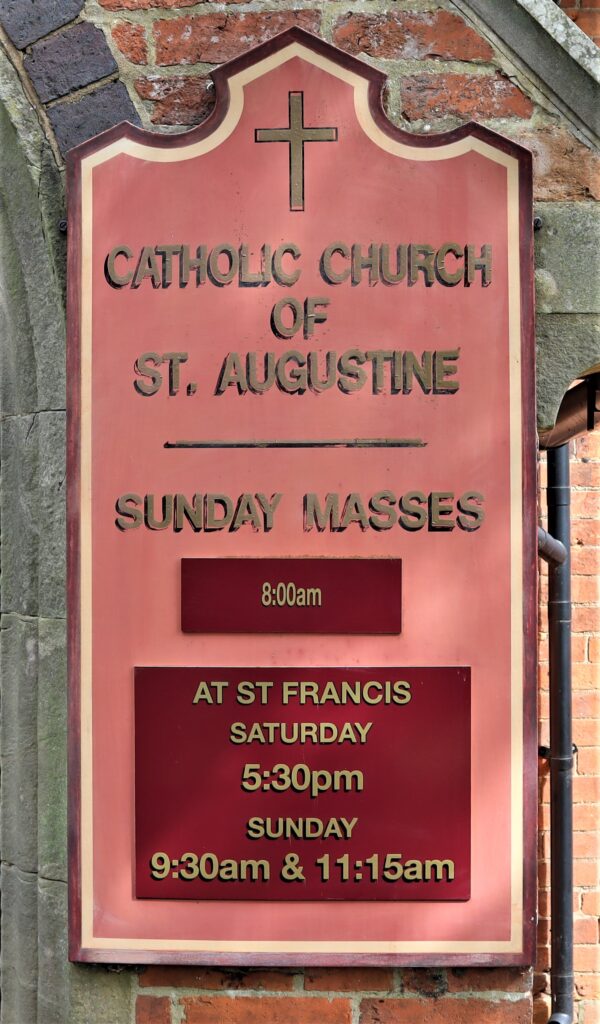
Public interest in the case had not at all abated during the week, and the event still formed the staple of conversation in the town. On Friday as soon as the news of the tragedy became known, the victim, being a Roman Catholic, was attended at once by the Right Reverand Monseigneur Souter. He was present when Brewer breathed his last breath. Miss Amherst, sister of Bishop Amherst, also attended him. On Sunday at St Augustine, Monseigneur Souter referred to this event and remarked that the cousins were bought up at the same font and were not strangers to their religion.
The funeral took place on Tuesday 3rd November. The cortege wended its way from Clayfield and was accompanied by large numbers of people who lined the route leading to St Augustine’s. The interment was witnessed by a great concourse of spectators and many sympathisers of the family. The mourners included the murdered man’s father, John, sister Agnes and his brothers John and Thomas. His fiancé, Miss Clara Avies. was also present, they were to be married at Christmas.
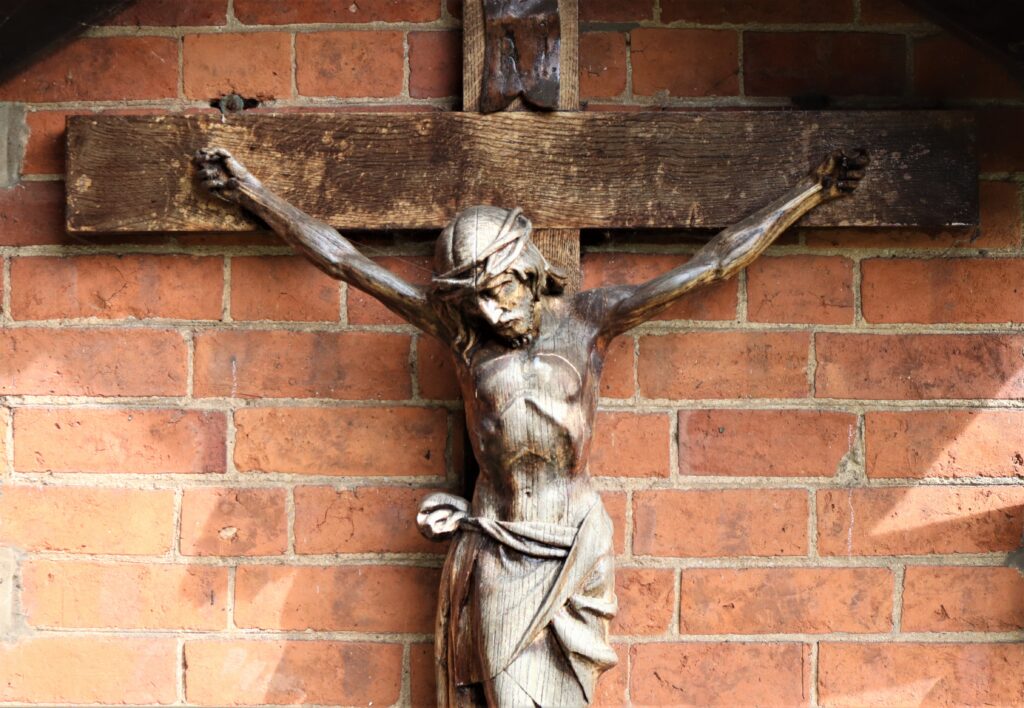
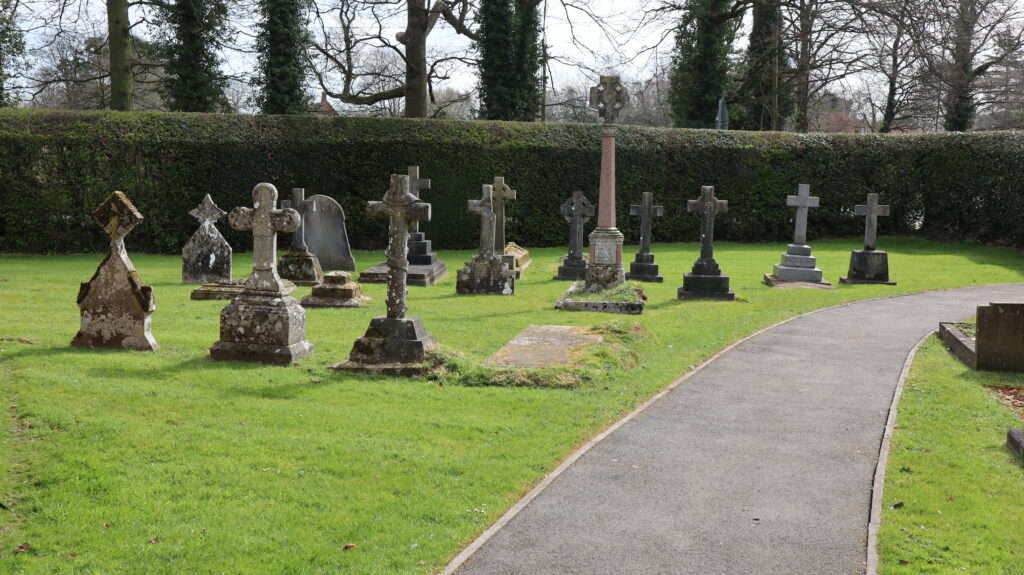
The coffin was covered with a large number of beautiful wreaths sent by relatives and friends. Included in the floral tributes was a magnificent one sent by Joseph Murdock of Crew Gardens, and the coffin was borne by workers from the same company, with whom the deceased had formed a friendship. He was buried in the north-west corner of the churchyard. The ceremony was conducted by Monseigneur Souter.
John Reuben Rainbow was buried on Monday 2nd November at St Anne’s church in Wappenbury.